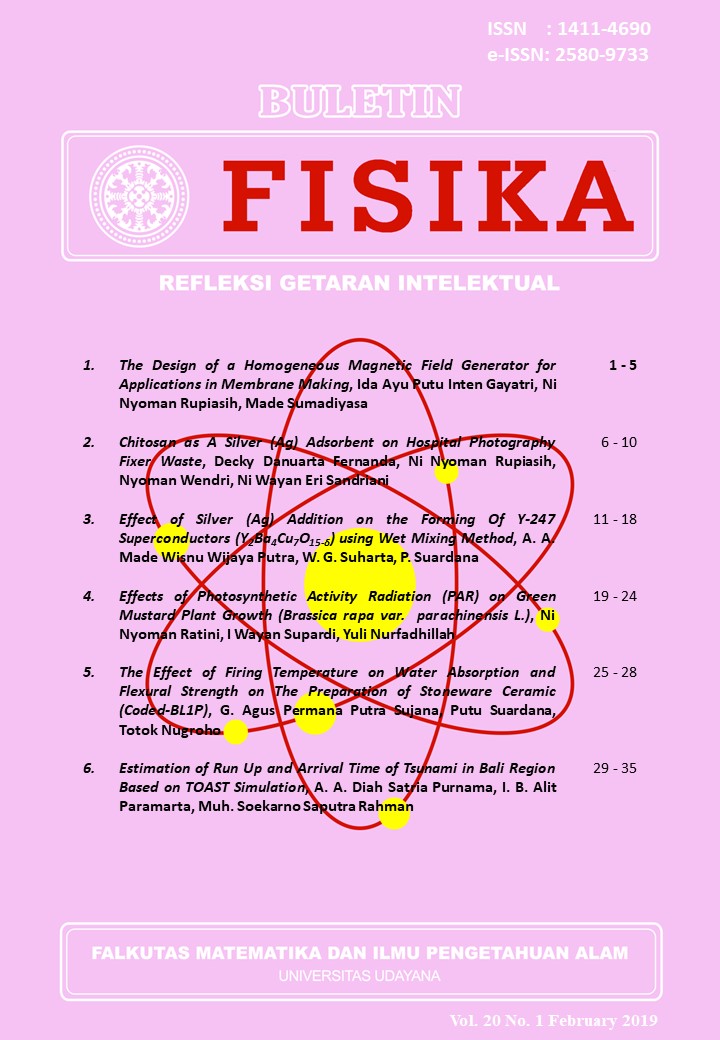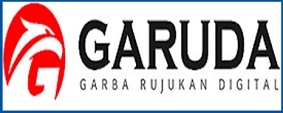The Effect of Firing Temperature on Water Absorption and Flexural Strength on The Preparation of Stoneware Ceramic (Coded-BL1P)
Abstract
It has been investigated the effect of firing temperature on water absorption and flexural strength in the manufacture of BL1P code stoneware ceramics. Ceramics are made in the form the test block bar with materials from of Borneo Clay Noodle, PRC Feldspar, Kaolin Belitung, Belitung Quartz, Ballclay Bantur, Bentonite, and Talk with a simple casting method. The block bar of the molds was burned at four temperature variations, i.e. 850, 900, 1000, and 1200 oC. From the results of measurements of it water absorption, it was found that the increase in firing temperature from 850 oC to 1200 oC showed a decrease in water absorption from 18.3% to 5.5%, while the measurement of it flexural strength showed an increase in flexural strength of 11.6 kg/cm2 to 19.8 kg/cm2.
Downloads
References
[2] T. Oishi, Ceramics Body, Gifu Prefecture Ceramics Research Institute Nagoya, International Training Center. Japan International Cooperation Agency, 1986.
[3] R. Behrens, Glaze Project, a Formula of Leadless Glazes, A Ceramics Monthly Magazine Handbook, Ohio: Profesional Publications, Inc., 1993.
[4] J.C. Miller and J.N. Miller, Statistics for Analytical Chemistry, Ellis Horwod Limited, New York,1998.
[5] Supomo, Karakterisasi dan Pengendalian Bahan Mentah Keramik, Diklat Quality Control Supervisor Industri Keramik Saniter dan Tableware, Bandung: BBIK, 1998.
[6] Nelson and C. Glen, Ceramics a Potterr’s Handbook, New York: John Wiley and Sons, 1986.
[7] B. Alexander, Panduan Praktis Kamus Keramik Untuk Praktisi, Perajin dan Industri, Milenia Populer, Jakarta: Australia – Indonesia, 2001.
[8] B. Mason and B.M. Carleton, Principles of Geochemistry, New York: John Wiley & Sons, 1982.
[9] K.N. Sundari, Makalah Ilmiah Pengkajian Industri, Deputi Teknologi Industri Rancang Bangunan & Rekayasa Badan Pengkajian dan Penerapan Teknologi. Denpasar, Bali, 2011.
[10] A.W. Vieira, M.D.M Innocentini, E. Mendes, et al., Comparison of Methods for Determining the Water Absorption of Glazed Porcelain Stoneware Ceramic Tiles, Material Research, 2017, pp. 1-2.
[11] C.B. Carter and M.G. Norton, Ceramic Materials Science and Engineering, Springer, 2013, pp. 305.
[12] D.A. Rozo, J.S. Molina and J.F. Gelves, Influence of raw materials and forming technique in the manufacture of stoneware ceramic, Ingeniería y competitividad, 2017, pp 93-105.
[13] L.R.S. Conserva, F.G. Melchiades, S. Nastri, et al., Pyroplastic Deformation of Porcelain Stoneware. In: Wet vs Dry Processing, Elsevier, 2016, pp. 3.











